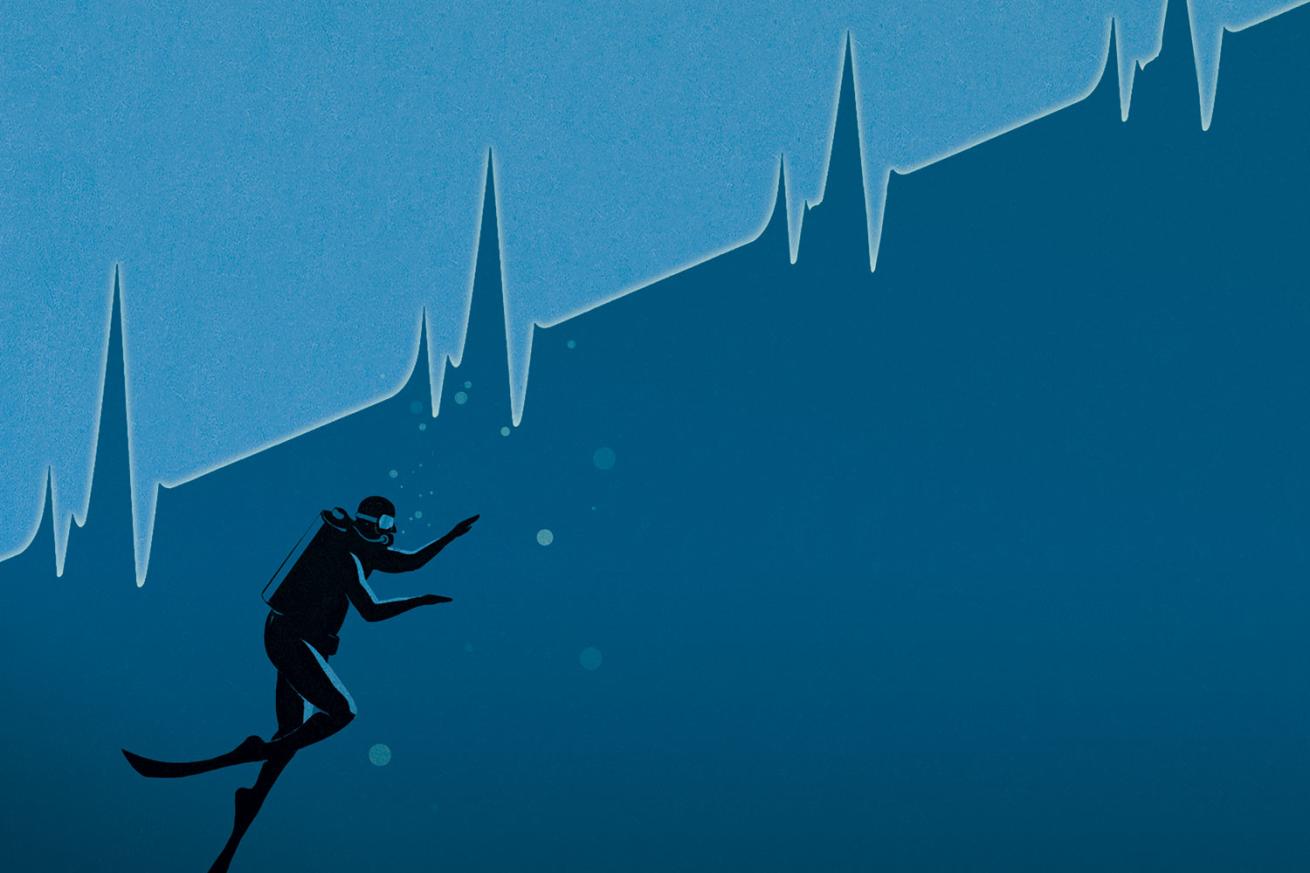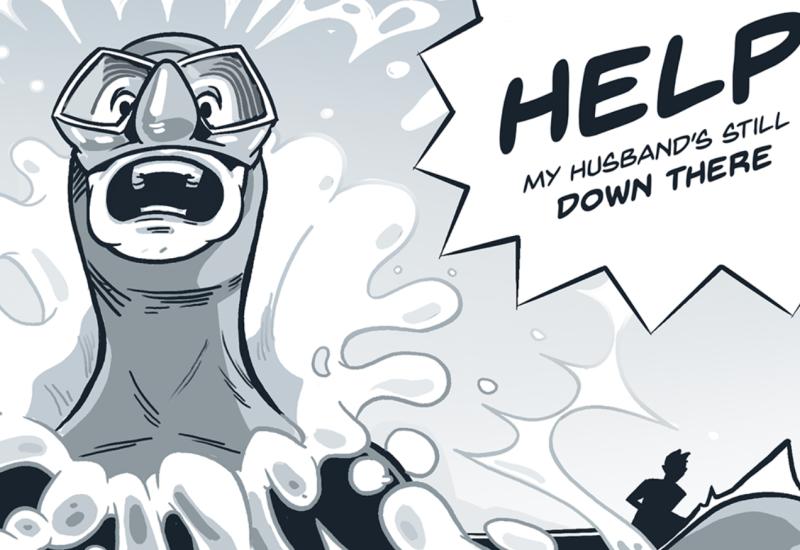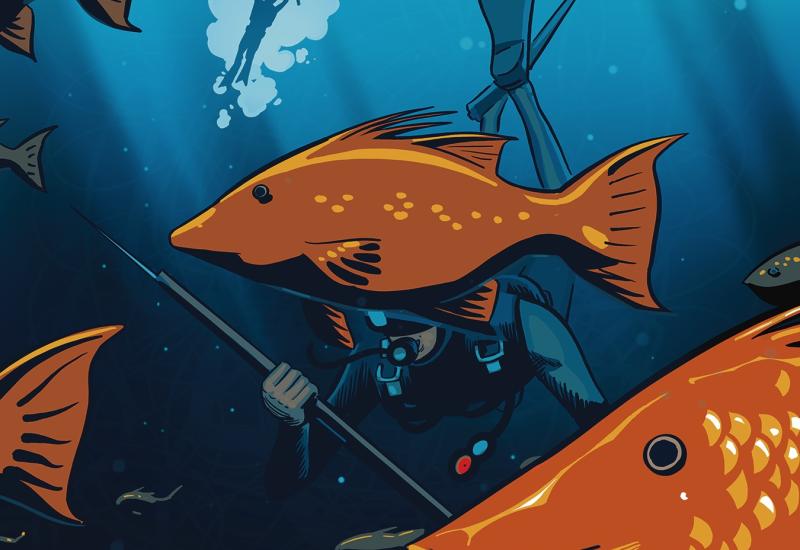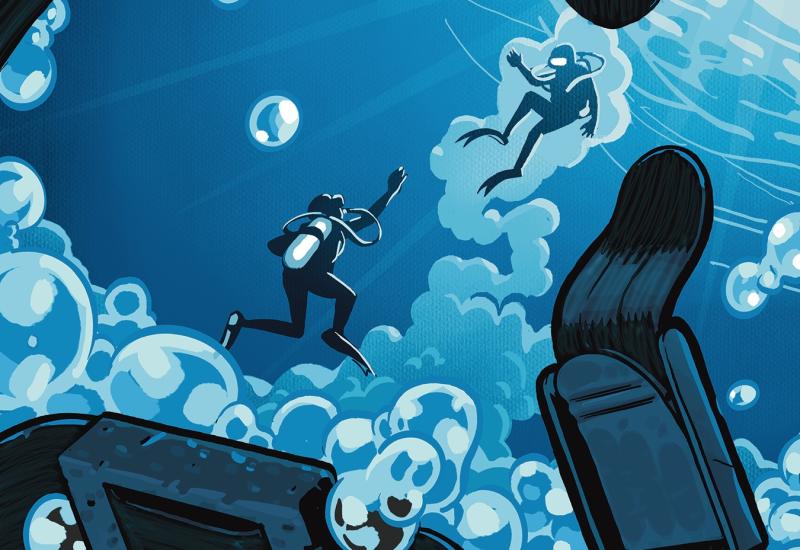Lack of Fitness Spells Disaster for Inexperienced Dive Duo

Carlo GiambarresiKnowing — and addressing — your risk factors is doubly critical for divers.
Glenn loved to dive with his son — it made everything about the sport perfect. Conditions on this day, however, were making things a bit less than ideal. Now that they were back on the surface, the waves were high and getting worse. Glenn wasn’t looking forward to exiting through the surf zone; to make matters worse, he just couldn’t catch his breath.
THE DIVER
Glenn was 49, with 25 lifetime dives and a basic open-water certification. He had learned to dive on the beaches near his home, and most of his few dives had been made at that same site. He was in moderate health with no diagnosed problems, although his doctor warned that he needed to lose weight and get more exercise.
Glenn’s son Todd was 17 and had just learned to dive that year. The younger diver had completed 10 dives, all with his father. He had a basic open-water-diver certification as well.
THE DIVE
Glenn and Todd arrived at the shore early that morning. Conditions were moderate, but both men knew that getting through the surf zone in full gear was tricky. After that, things would settle down and they could have a nice dive. After making their entry, they swam on the surface, pulling a float-and-dive-flag combination with them until they were far enough out to begin the dive. Before he submerged, Glenn felt uncomfortable and was breathing hard, so he held onto the float for a few minutes to catch his breath before submerging.
Underwater, Glenn felt fine. They completed a dive with a maximum depth of 80 feet for 40 minutes and then made a safety stop at 15 feet for three minutes before they returned to the surface.
THE ACCIDENT
The two divers surfaced to find the wind had picked up, making the waves a bit stronger. As soon as they headed for their exit point, Glenn found himself in trouble again. He complained to his son that his gear felt tight and he couldn’t breathe, so Todd towed his father toward the beach.
“The fact that we have an aging population means there are many middle-aged males participating in diving, and that is the group at greatest risk.”
When they got to the surf zone, Glenn lost consciousness. Todd secured his father to the float and exited the water by himself so he could ditch his gear and get help. Once he cleared the surf, Todd got the attention of other divers on the beach, and two of them ran to his aid. They all re-entered the water to rescue Glenn.
The divers stripped Glenn out of his gear and pulled him onto shore. They immediately began resuscitation efforts, but Glenn never regained consciousness.
ANALYSIS
This accident is less about mistakes made during the dive than it is about a question facing nearly all divers: Are you healthy and fit enough to dive?
The autopsy indicated that Glenn had undiagnosed severe blockages in his arteries, which led to his heart being enlarged, a condition called cardiomegaly. The cause of death was declared drowning, secondary to a cardiac event. In short, Glenn had a heart attack in the water and then drowned. Approximately one-third of fatal dive accidents are cardiac events in the water where the diver drowns, or rescuers are unable to resuscitate the diver back on the boat.
This Lessons for Life has a personal element. In 2016, I had a heart attack — although not in the water — and ended up having open-heart surgery because of blockages in the arteries that supply blood to my heart muscle. I wrote a series of articles for Scuba Diving about my situation and the process of recovery that it took to get me back in the water. I interviewed Dr. James Caruso about exactly what had happened to me, and why it was such a problem for divers.
“Essentially it is a plumbing problem,” Caruso explained. “Atherosclerotic-plaque buildup is predominantly a combination of cholesterol buildup on the inside of the blood vessels, along with injury to the lining of these blood vessels. There are several risk factors that accelerate this plaque formation such as cigarette smoking; elevated serum lipid levels such as high cholesterol and high triglycerides; high blood pressure; genetics; increasing age up to a point; and male gender.
Lessons for Life
■ Get in shape for diving. Reduce risk factors such as obesity, smoking, high blood pressure and high cholesterol. Exercise regularly.
■ If you have any of those risk factors, see your doctor and receive a complete physical. If warranted, you should seek a stress test to make sure your heart is healthy enough for diving.
■ Remember, you can return to diving after receiving stents in your heart or even after open-heart surgery, but you can’t keep diving if you are dead.
■ Get trained in emergency-care techniques and have the necessary equipment on hand to administer basic life support in an emergency.
■ Become a rescue diver.
“The heart’s response to high blood pressure is to get bigger, like any other muscle pushing against resistance. A larger heart needs more oxygen, and the blood has to flow to more tissue. This can be problematic if there is coronary-artery disease restricting blood flow.” This most likely explains Glenn’s enlarged heart.
“Divers are at no greater risk for coronary artery disease than the average person,” Caruso says. “The fact that we have a somewhat aging diving population means that there are many middle-aged males participating in recreational diving, and that is the group at greatest risk. The other problem is that diving frequently takes place in somewhat isolated locations, far from the high-level medical care required to get a person through a potentially fatal ischemic cardiac event. You are much more likely to survive a heart attack if immediate resuscitation efforts, particularly defibrillation, are employed.”
I’ve been writing and teaching about the use of automated external defibrillators (AEDs) on dive boats since 2003. Many liveaboards have opted to purchase them, and even some day boats have too. Learning CPR is a great skill for divers, and it is absolutely important as a first step to save the life of someone in cardiac arrest, but it isn’t a magic bullet.
For every minute a person is in cardiac arrest, their chance of survival drops by approximately 10 percent — even with CPR. After about 10 minutes, the chance that person will regain a pulse is just about nonexistent. When you consider the possible delay in providing care when bringing an unconscious diver to the surface and getting his gear off to get him in the boat, the window is very, very small. Having an AED, and a crew trained to use it, is vitally important.
Eventually, Glenn likely would have had a heart attack on land, but the additional stress of the dive pushed his heart over the limit. The delay in getting him out of the water and beginning care made it nearly impossible that he would have survived the situation.
On a more practical level, Todd’s inexperience with dive rescues delayed getting Glenn to emergency care. The divers were diving in relatively cold water, so they were both carrying a large amount of lead to offset heavy wetsuits. Glenn’s weights were never dropped from the integrated BCD he was wearing. Had Todd dropped Glenn’s weights, he could have made Glenn positively buoyant on the surface. Removing Glenn’s scuba unit would have made it much easier for him to tow Glenn on the surface and through the surf zone. It is possible that getting Glenn to the beach faster would have increased his chances of surviving the incident.
Ditching his weights would have allowed Glenn to float higher in the water, lessening the chances that he aspirated water and drowned. The odds that Glenn would have survived this incident even with a perfect rescue are low, but they would have been higher than they were.
About Lessons For Life
We're often asked if the Lessons for Life columns are based on real-life events. The answer is yes, they are. The names and locations have been removed or altered to protect identities, but these stories are meant to teach you who to handle a scuba diving emergency by learning from the mistakes other divers have made. Author Eric Douglas takes creative license on occasion for the story, but the events and, often, the communication between divers before the accident are entirely based on incident reports.










